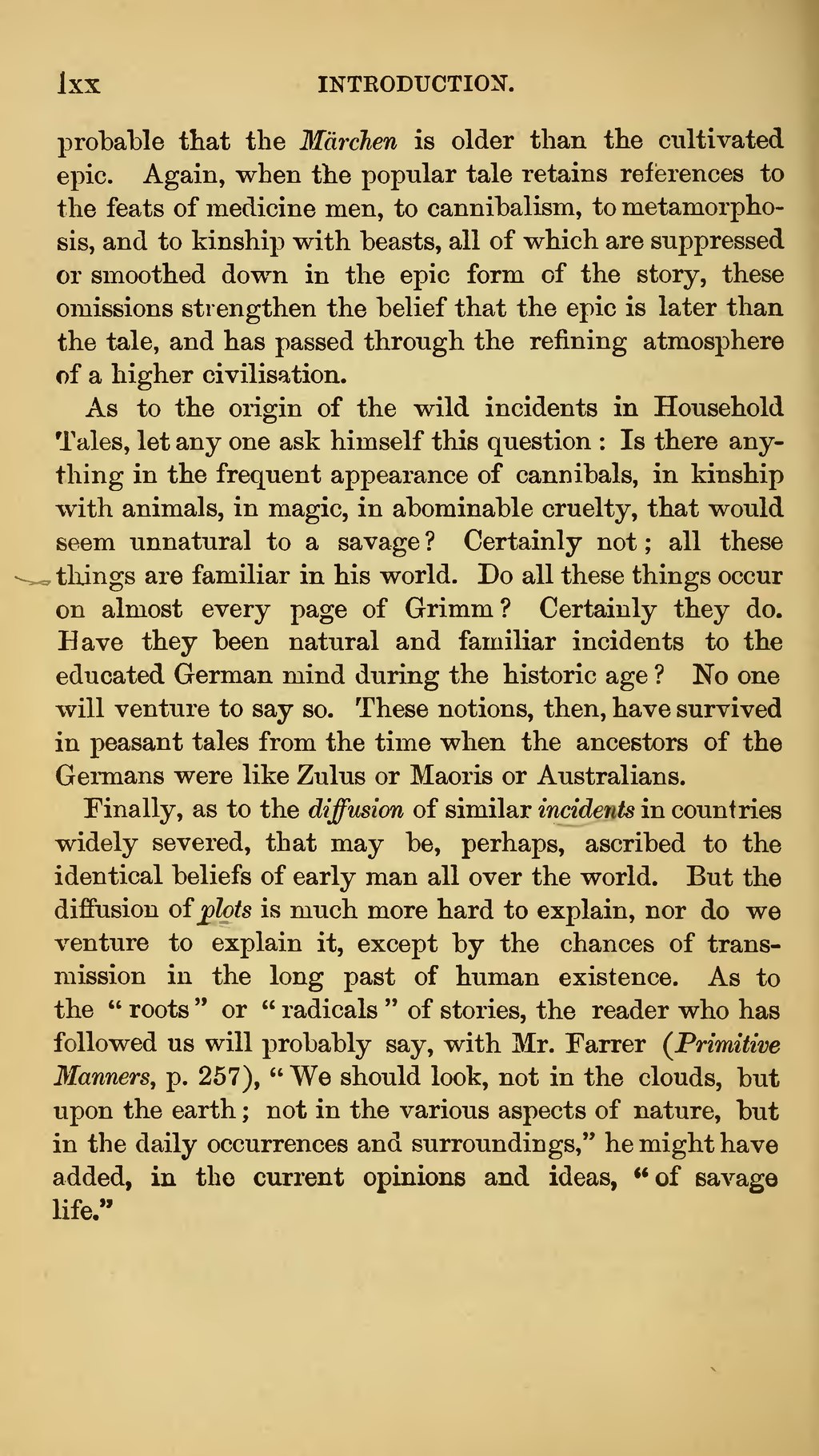probable that the Märchen is older than the cultivated epic. Again, when the popular tale retains references to the feats of medicine men, to cannibalism, to metamorphosis, and to kinship with beasts, all of which are suppressed or smoothed down in the epic form of the story, these omissions strengthen the belief that the epic is later than the tale, and has passed through the refining atmosphere of a higher civilisation.
As to the origin of the wild incidents in Household Tales, let any one ask himself this question: Is there anything in the frequent appearance of cannibals, in kinship with animals, in magic, in abominable cruelty, that would seem unnatural to a savage? Certainly not; all these things are familiar in his world. Do all these things occur on almost every page of Grimm? Certainly they do. Have they been natural and familiar incidents to the educated German mind during the historic age? No one will venture to say so. These notions, then, have survived in peasant tales from the time when the ancestors of the Germans were like Zulus or Maoris or Australians.
Finally, as to the diffusion of similar incidents in countries widely severed, that may be, perhaps, ascribed to the identical beliefs of early man all over the world. But the diffusion of plots is much more hard to explain, nor do we venture to explain it, except by the chances of transmission in the long past of human existence. As to the "roots" or "radicals" of stories, the reader who has followed us will probably say, with Mr. Farrer (Primitive Manners, p. 257), "We should look, not in the clouds, but upon the earth; not in the various aspects of nature, but in the daily occurrences and surroundings," he might have added, in the current opinions and ideas, "of savage life."
